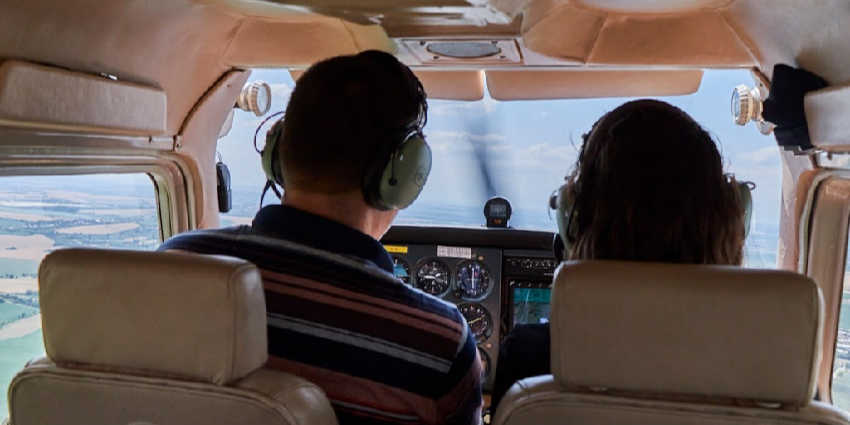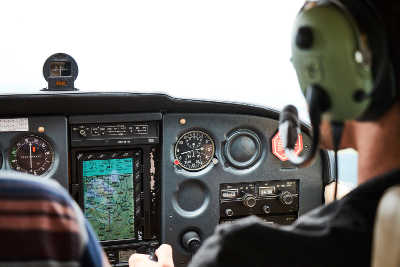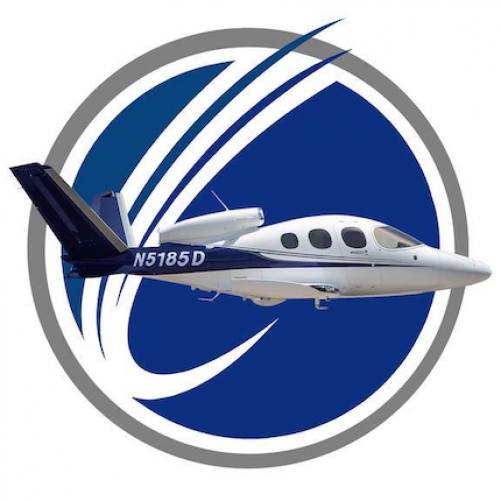For local resources,
choose a city page in California:

Fixed Wing Pilot License Training California
Make an informed decision on which program offering fixed wing pilot license training in California is right for you. Get some experience - contact multiple schools to see what feels right for you.
Factors to consider when choosing your fixed wing pilot license training:
- Distance to the airport: Make sure the airport is close enough that you can make the trip at least two times per week. If just getting to the airport is tough for you, you're probably not going to make it through fixed wing pilot training.
- Facility: Clean, organized, and welcoming offices, hangars, and bathrooms say a lot about how a company operates.
- Fleet: Take a look at the school's aircraft. Do they look maintained, or run down? The condition of the aircraft often indicates the overall quality of flight training you'll receive.
- Instructors: Try to meet as many of the instructors as possible before making a purchasing decision. Often, you'll "click" with a certain instructor, and that can really pay off down the road.
- Payment options: It's generally a good idea to buy "block" time if the Fixed Wing Pilot Training offers a good discount (However, don't buy too much time in advance. Avoid schools that require you to "pay 100% upfront").
Fixed Wing Pilot Training in California
Learning to fly is a challenge! Do you have what it takes? Do you have the time? The money? Will you be successful? Will your family fly with you? Are there jobs out there for professional pilots in California?
 In this section, we try to answer as many questions as possible about researching, contacting, and finally deciding on the fixed wing pilot training that's right for you.
In this section, we try to answer as many questions as possible about researching, contacting, and finally deciding on the fixed wing pilot training that's right for you.
If you want to fly for a living, you'll need to consider fixed wing pilot training in California that offers private pilot, commercial pilot, and instrument rating training, because all three of these licenses/ratings are required (by most companies) to get a job as a pilot.
You can count on the whole process taking six months to a year or more to complete. For this reason, most aspiring professional pilots attend a fixed wing pilot training program that specializes in teaching career pilots.
Advantages of Fixed Wing Private Pilot License
There are several distinct advantages when attending fixed wing pilot training:
- Shorter training programs (through accelerated training),
- Airline-style training environment,
- Lower costs,
- And the chance to build flight hours as a certified flight instructor upon graduation.
Graduates of pilot training are often hired on by the fixed wing pilot training program to teach the next generation of pilots attending the school. Although pay is generally pretty low, most graduates are only there to build up the number of flight hours they need to apply and get, their next job as a pilot.
By building the requisite number of hours quickly, aspiring professional pilots get into their next job faster, and build up seniority sooner, which can translate into higher pay and a better position in the company down the road. However, when researching these fixed wing pilot training programs in California, be on the lookout: don't pay for large amounts of flight time in advance.
When deciding on a program, it is important to consider your flying goals. What kind of flying do you plan to do? Do you want to learn to fly for a hobby? Do you want to learn to fly for a living? Do you plan to fly for an airline? Questions like these are important to consider. For the average Sunday flyer, someone who is just out to fly for fun or perhaps personal travel, it is hard to beat the convenience of the local airport.
How the FAA Mitigates the Impact of Bad Weather
They include ground stops, which keep aircraft on the ground when air traffic control is unable to safely accommodate additional aircraft in the system, ground delays, in which aircraft are delayed at their departure airport in order to manage demand and capacity at their arrival airport, and Severe Weather Avoidance Plans, which minimize the impact of a large scale storm by easing traffic demand in portions of airspace impacted by the storm. Other tools include:
- The Airspace Flow Program which identifies aircraft scheduled to fly through severe weather and provides new estimated departure times, giving airlines the flexibility to accept the delay, fly around the storm or cancel the flight.
- Time Based Flow Management is a technology used to adjust capacity and demand imbalances at select airports and points in the sky throughout the U.S., while Traffic Management Advisor is a comprehensive, automated tool for planning efficient flight trajectories from cruise altitude to the runway.
- The fully-automated NextGen Weather Processor identifies safety hazards around busy airports and at high altitudes, and also provides support for strategic traffic flow management, including weather information needed to predict routes blocked by bad weather up to eight hours in advance.
- The Aviation Weather Display consolidates previously separate weather displays, providing important weather information at a glance for controllers.
Fixed-Wing Aircraft Factoid Maintaining the Aircraft
Airframe, engine, and aircraft component manufacturers are responsible for documenting the maintenance procedures that guide managers and technicians on when and how to perform maintenance on their products. A small aircraft may only require a few manuals, including the aircraft maintenance manual. This volume usually contains the most frequently used information required to maintain the aircraft properly. The Type Certificate Data Sheet (TCDS) for an aircraft also contains critical information.





